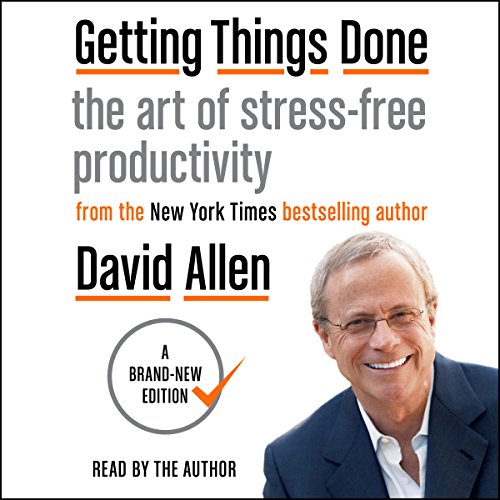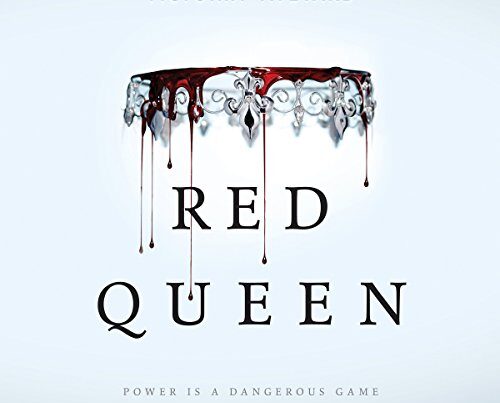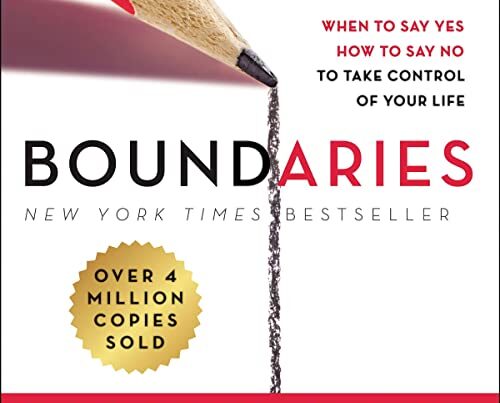David Allen’s “Getting Things Done” audiobook offers a practical system for productivity. It helps listeners manage tasks efficiently.
David Allen’s “Getting Things Done” is a transformative guide for boosting productivity. The audiobook presents a clear and practical system to organize tasks and projects. Allen’s method, known as GTD, focuses on capturing ideas, clarifying actions, and systematically managing tasks.
This approach reduces stress and improves efficiency. With its step-by-step instructions, the audiobook is accessible and actionable. Listeners learn to prioritize effectively, resulting in better time management. The GTD system is suitable for both personal and professional use. By implementing these strategies, users can achieve a more organized and productive life. The audiobook is a valuable resource for anyone looking to enhance their efficiency.
Introduction To ‘getting Things Done’
‘Getting Things Done‘ is a groundbreaking book by David Allen. It offers a simple, yet effective system for managing tasks. The book is perfect for anyone who feels overwhelmed by their to-do list.
The audiobook version brings Allen’s voice and teachings directly to your ears. This format is great for those who prefer listening over reading. You can learn while commuting, exercising, or doing chores.
David Allen’s Impact On Productivity
David Allen has changed the way people think about productivity. His GTD method helps you organize tasks and reduce stress. Allen’s approach is practical and easy to implement.
- Capture: Collect everything that needs your attention.
- Clarify: Process what each item means.
- Organize: Put tasks in the right place.
- Reflect: Review your system regularly.
- Engage: Use your system to take action.
People worldwide use the GTD method to stay organized. It works for both personal and professional tasks. Allen’s impact on productivity is undeniable.
The Rise Of Audiobooks In Learning
Audiobooks are becoming popular for learning new skills. They fit into busy schedules and offer flexibility. You can listen while doing other activities.
| Benefits of Audiobooks | Examples |
|---|---|
| Convenience | Listen while driving or walking |
| Accessibility | Available on smartphones and tablets |
| Engagement | Authors often narrate their own books |
The ‘Getting Things Done’ audiobook is a perfect example. It allows you to absorb David Allen’s wisdom effortlessly. The rise of audiobooks in learning is a trend worth noting.
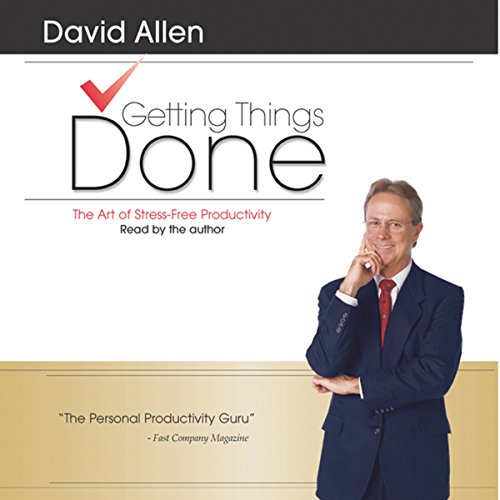
The Gtd Philosophy
The Getting Things Done (GTD) philosophy, created by David Allen, is a productivity system. The GTD system helps people manage their tasks and projects effectively. With the GTD method, you can reduce stress and increase efficiency.
Core Principles Of Gtd
The GTD philosophy is built on a few core principles. These principles are simple yet powerful. They guide you to capture, clarify, organize, reflect, and engage.
- Capture: Collect all tasks and ideas.
- Clarify: Process what each item means.
- Organize: Put tasks in the right place.
- Reflect: Review your tasks regularly.
- Engage: Do the tasks.
The Five Stages Of Mastering Workflow
Mastering workflow involves five stages. These stages help you stay organized and productive.
- Capture: Collect everything that has your attention. Use tools like notebooks or apps.
- Clarify: Decide what each item means. Is it actionable or not?
- Organize: Categorize your tasks. Use lists, folders, or calendars.
- Reflect: Review your tasks weekly. Ensure nothing is forgotten.
- Engage: Choose what to work on. Use the context, time, and energy available.
The GTD method is flexible and easy to follow. It helps you achieve a clear mind and productive life.
The Audiobook Advantage
The audiobook format of David Allen’s “Getting Things Done” offers unique advantages. This format provides flexibility and convenience for busy individuals. Let’s explore the benefits and compare it to traditional reading.
Benefits Of The Audiobook Format
- Multitasking: Listen while doing other tasks like driving or cooking.
- Portability: Carry it on your phone or tablet anywhere.
- Accessibility: Ideal for those with visual impairments or reading difficulties.
- Engagement: Narration can make the content more engaging.
- Time-saving: Listen at an increased speed to save time.
Comparing Audiobook To Traditional Reading
| Aspect | Audiobook | Traditional Reading |
|---|---|---|
| Flexibility | Listen while multitasking | Requires dedicated time |
| Portability | Stored on a device | Physical book or e-reader needed |
| Accessibility | Great for visually impaired | May not be suitable |
| Engagement | Enhanced by narration | Depends on reader’s interest |
| Time Management | Listen at variable speeds | Fixed reading speed |
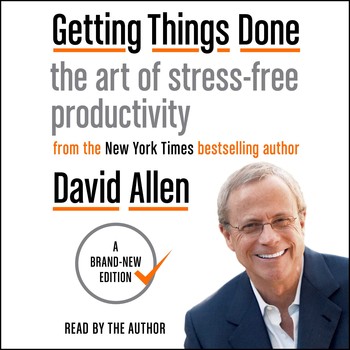
Organizing Your Workspace
David Allen’s Getting Things Done audiobook is a treasure trove of productivity tips. One critical aspect it covers is organizing your workspace. A well-organized workspace can enhance focus and efficiency. Let’s dive into some strategies.
Physical Vs. Digital Spaces
Workspaces can be either physical or digital. Each has its unique challenges and solutions.
| Physical Spaces | Digital Spaces |
|---|---|
| Desk, shelves, drawers | Computer desktop, folders, cloud storage |
| Physical documents, office supplies | Emails, digital files, apps |
Strategies For Decluttering
David Allen emphasizes the importance of a clutter-free environment. Here are some strategies:
- Sort and Categorize: Group similar items together.
- Use Storage Solutions: Bins, boxes, and folders help organize.
- Label Everything: Clear labels make finding things easier.
- Limit Digital Clutter: Regularly delete unnecessary files.
- Set Up a Filing System: Both physical and digital files need order.
Implementing these strategies can transform your workspace. You’ll notice a boost in productivity and a reduction in stress.
Time Management Techniques
David Allen’s Getting Things Done Audiobook teaches valuable time management techniques. These methods can help you stay organized. They also boost your productivity.
Prioritizing Tasks
One key technique is prioritizing tasks. This helps you focus on what matters most. To prioritize, list all your tasks.
- Sort tasks by importance
- Focus on high-priority items first
- Use a simple system like A, B, and C
For example, ‘A’ tasks are urgent. ‘B’ tasks are important but not urgent. ‘C’ tasks can wait.
The Two-minute Rule
The two-minute rule is another effective technique. If a task takes two minutes or less, do it now. This keeps small tasks from piling up.
Here are steps for using the two-minute rule:
- Identify a quick task
- Complete it immediately
- Move on to the next task
Applying this rule can clear your mind. It helps you stay focused on larger tasks.
The Art Of Stress-free Productivity
David Allen’s audiobook, Getting Things Done, teaches the art of stress-free productivity. This method is about organizing tasks effectively. It helps you to manage your workload without stress.
Mindfulness In Gtd
Mindfulness plays a big role in the GTD method. Staying present helps you to focus better. It prevents your mind from wandering. You can give full attention to one task at a time. This increases the quality of your work.
With GTD, you learn to capture every task. You list them all in one place. This keeps your mind clear. You can focus on the task at hand without worry. You know everything is noted down and won’t be forgotten.
Maintaining Work-life Balance
Maintaining a good work-life balance is crucial. GTD helps you achieve this balance. You can separate work tasks from personal tasks. This ensures that neither area is neglected.
With GTD, you can create a weekly review. This helps you keep track of both work and personal tasks. You can plan your week effectively. You will have time for work and for relaxation.
Here is a simple table to show how GTD can help balance your work and personal life:
| Aspect | GTD Benefit |
|---|---|
| Work Tasks | Organized and prioritized |
| Personal Tasks | Included in your schedule |
| Mindfulness | Enhanced focus and clarity |
| Stress | Reduced significantly |
Implementing Gtd With Technology
David Allen’s Getting Things Done (GTD) audiobook has revolutionized productivity. Implementing GTD with technology can make your workflow smoother and more efficient. This section explores how to integrate GTD principles with modern tech tools.
Apps And Tools For Gtd
Several apps and tools can help you implement GTD effectively. These tools can help you manage tasks, organize lists, and streamline your workflow.
- Todoist: This app helps you create and organize tasks. It offers features like due dates and project labels.
- Trello: Trello uses boards and cards to help you visualize tasks. It is great for team collaboration.
- Evernote: Evernote helps you capture notes, ideas, and tasks. It syncs across all your devices.
- Microsoft OneNote: This app offers a digital notebook to keep all your notes and tasks in one place.
Using these tools can enhance your GTD experience. They provide features that align well with GTD principles.
Customizing Gtd For Personal Use
GTD is flexible and can be customized to fit your personal needs. Here are some tips for tailoring GTD to suit your workflow:
- Identify Your Priorities: Focus on what matters most to you. Create task lists that reflect your priorities.
- Set Up Context Lists: Context lists help you group tasks by location or situation. This makes it easier to tackle similar tasks together.
- Use Tags and Labels: Tags and labels can help categorize tasks. This makes it easier to find and sort tasks later.
- Review Regularly: Regular reviews help you stay on top of your tasks. Set aside time each week to review and update your lists.
Customizing GTD can make it more effective for you. Tailor the system to match your personal workflow and preferences.
| Tool | Best For | Key Features |
|---|---|---|
| Todoist | Task Management | Due dates, project labels |
| Trello | Team Collaboration | Boards, cards, visual tasks |
| Evernote | Note Taking | Sync across devices |
| Microsoft OneNote | Digital Notebook | All notes in one place |
Implementing GTD with technology can help streamline your tasks. Use the right tools and customize the system for your needs.
Success Stories And Case Studies
David Allen’s Getting Things Done audiobook has transformed many lives. In this section, we explore real-life success stories and case studies.
How Gtd Transformed Lives
Many individuals have found GTD to be life-changing. They have shared their stories of success and transformation.
- John Smith: John was struggling with productivity. After implementing GTD, he reported a 50% increase in his efficiency.
- Sarah Johnson: Sarah had issues with work-life balance. GTD helped her organize tasks, leading to more free time and less stress.
These are just a few examples. The GTD method has helped countless people regain control of their lives.
Corporate Adoption Of Gtd
Many companies have embraced Getting Things Done. They have seen significant improvements in employee productivity and overall efficiency.
| Company | Results |
|---|---|
| XYZ Corp | 20% increase in project completion rates. |
| ABC Inc | Reduced employee burnout by 30%. |
These corporations have reported positive changes. They attribute these improvements to the adoption of GTD principles.
Beyond The Book: Continuing Gtd Education
David Allen’s Getting Things Done (GTD) audiobook offers a wealth of knowledge. Yet, the journey to productivity doesn’t end there. To master GTD, explore further learning options. These resources provide deeper insights and practical applications. Let’s dive into two key avenues: workshops and community networking.
Workshops And Seminars
GTD workshops and seminars are pivotal. They offer hands-on training. Certified instructors lead these sessions. You can find both in-person and online options. These events often include:
- Interactive exercises
- Real-life case studies
- Q&A sessions with experts
Attendees gain practical skills. They also receive personalized feedback. Many workshops provide materials for future reference. This ensures continuous improvement in your GTD practice.
The Gtd Community And Networking
Joining the GTD community offers immense benefits. Networking with like-minded individuals fosters growth. Online forums, social media groups, and local meetups are valuable resources. Community members often share:
- Tips and tricks
- Success stories
- Challenges and solutions
This shared knowledge can inspire and motivate. It also helps in troubleshooting common issues. Being part of a supportive network enhances your GTD journey. You stay connected and accountable to your goals.
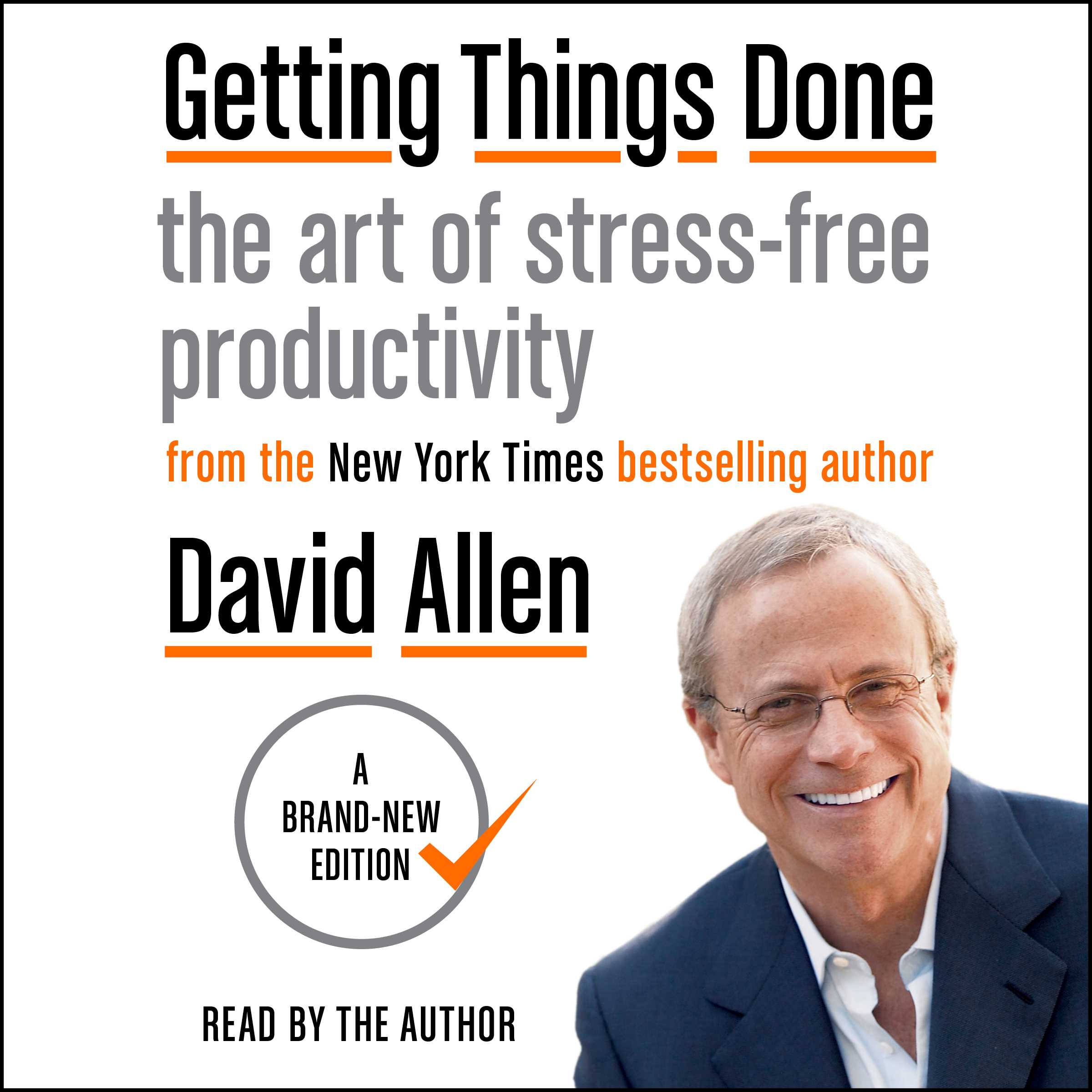
Conclusion: Integrating Gtd Into Daily Life
Integrating David Allen’s Getting Things Done (GTD) into daily life brings clarity and control. The audiobook offers practical steps to organize tasks efficiently. This section explores the long-term benefits and encourages taking the first step.
Long-term Benefits Of Gtd
Practicing GTD daily leads to numerous long-term benefits.
- Reduced Stress: A clear mind decreases stress levels.
- Increased Productivity: Completing tasks faster and more efficiently.
- Improved Focus: Prioritize important tasks without distractions.
Implementing GTD enhances personal and professional life. It provides a roadmap for achieving goals. Over time, these benefits compound, leading to greater success.
Encouragement To Take The First Step
Starting with GTD can feel overwhelming. Begin with small steps.
- Listen to the Getting Things Done Audiobook.
- Identify and list all current tasks.
- Organize tasks using GTD principles.
Remember, progress is more important than perfection. Each small step brings you closer to a more organized and stress-free life. Embrace the journey and trust the process.
Conclusion
David Allen’s “Getting Things Done” audiobook offers practical tips for boosting productivity. It’s a must-listen for anyone seeking effective time management. Implementing these strategies can transform your daily routine. Embrace the GTD method and see your efficiency soar. Don’t miss out on this essential guide to achieving more with less stress.
